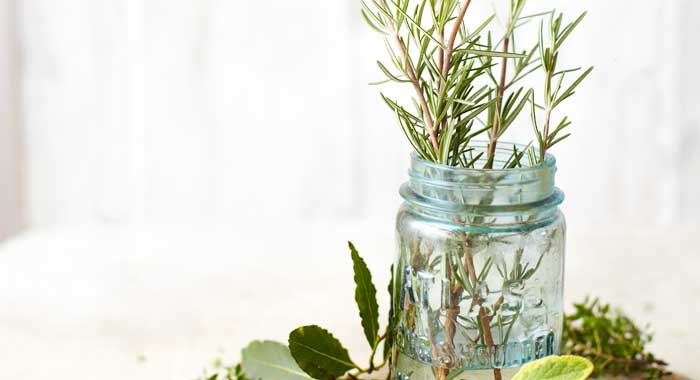
Pronounce it: rose-mar-ee
Rosemary’s intense, fragrant aroma has traditionally been paired with lamb, chicken and game, but it’s also suited to fish and bean dishes. Its shrub has light blue or pink flowers and dark green, needle-like leaves that are silver on the underside.
Originally from the Mediterranean, rosemary is most extensively used in French, Spanish and Italian cooking. Rosemary was prized by the Greeks for being good for the brain, and is also known as the herb sacred to friendship.
Availability
Rosemary is ever-green and is available fresh all year round. If you buy it in a pot, it will keep on a sunny windowsill (or outside in a sunny spot) for weeks, with regular watering. You could also plant bushes in your garden, alongside or instead of, lavender, for a ready, fragrant supply of leaves. Rub the leaves before you buy – not all rosemary plants are created equal, and you should pick one that’s strongly scented.
Choose the best
Choose fresh rosemary wherever possible. Dried rosemary is an acceptable alternative, but will need to be replaced regularly as it quickly loses its strength and flavour. One teaspoon of dried rosemary is the equivalent to three teaspoon of chopped fresh leaves.
Prepare it
Whole sprigs of rosemary can be added to pieces of meat or roasted vegetables and removed before serving. During the roasting process, rosemary leaves tend to fall from their stalk and so will need to be strained out.
To chop rosemary, strip the leaves off the woody stem and dice them very finely as they are quite tough. Similarly, crush dried rosemary before using it as the herb becomes even more brittle when dried. Rosemary can also be included in a bouquet garni.
Store it
Keep in the fridge in a tightly closed container or plastic bag. Fresh rosemary will keep for several weeks.
Be the first to comment on "Rosemary"